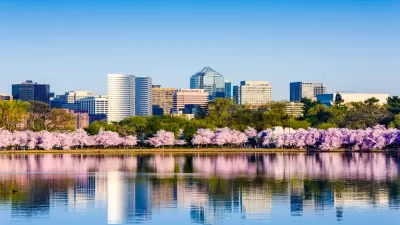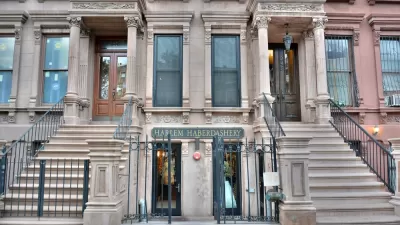The program gives households a rent subsidy that can be used flexibly over time, making it a valuable tool for workers with fluctuating incomes.

In a report for the Urban Institute and The Lab @ DC, Josh Leopold, Mychal Cohen, Maria Alva, Nat Mammo, and Sam Quinney evaluate the impact of the city's flexible rent subsidy program on housing stability in the District. "Flexible rent subsidies are one tool local governments are exploring to help families that are currently housed but remain one shock away from homelessness. A flexible subsidy allows families to decide how much of the subsidy to spend each month, up to their total rent. This flexibility can be particularly valuable for workers whose earnings fluctuate, such as seasonal workers and those in the 'gig' economy, who have been especially hard hit this past year."
D.C.'s program, DC Flex, "gives families $7,200 a year for rent to use whenever they need" and "was designed to fill a niche for families who do not need the case management offered in typical homeless assistance programs but who do need a subsidy to reliably afford rent and avoid homelessness."
"A review of the DC Flex account data showed 60 percent of program participants spent the full $7,200 over the course of the year, and others preserved funds for their second year in the program. This result suggests participants use the program’s flexibility to suit their specific financial needs." According to the study's authors, "[t]his is the moment for trying and testing flexible subsidies more broadly, and the DC Flex program is a promising example of how these programs can be structured."
FULL STORY: DC’s Flexible Rent Subsidy Program Shows Promising Early Results

Planetizen Federal Action Tracker
A weekly monitor of how Trump’s orders and actions are impacting planners and planning in America.

The Simple Legislative Tool Transforming Vacant Downtowns
In California, Michigan and Georgia, an easy win is bringing dollars — and delight — back to city centers.

San Francisco's School District Spent $105M To Build Affordable Housing for Teachers — And That's Just the Beginning
SFUSD joins a growing list of school districts using their land holdings to address housing affordability challenges faced by their own employees.

In More Metros Than You’d Think, Suburbs are Now More Expensive Than the City
If you're moving to the burbs to save on square footage, data shows you should think again.

The States Losing Rural Delivery Rooms at an Alarming Pace
In some states, as few as 9% of rural hospitals still deliver babies. As a result, rising pre-term births, no adequate pre-term care and "harrowing" close calls are a growing reality.

The Small South Asian Republic Going all in on EVs
Thanks to one simple policy change less than five years ago, 65% of new cars in this Himalayan country are now electric.
Urban Design for Planners 1: Software Tools
This six-course series explores essential urban design concepts using open source software and equips planners with the tools they need to participate fully in the urban design process.
Planning for Universal Design
Learn the tools for implementing Universal Design in planning regulations.
Smith Gee Studio
City of Charlotte
City of Camden Redevelopment Agency
City of Astoria
Transportation Research & Education Center (TREC) at Portland State University
US High Speed Rail Association
City of Camden Redevelopment Agency
Municipality of Princeton (NJ)





























